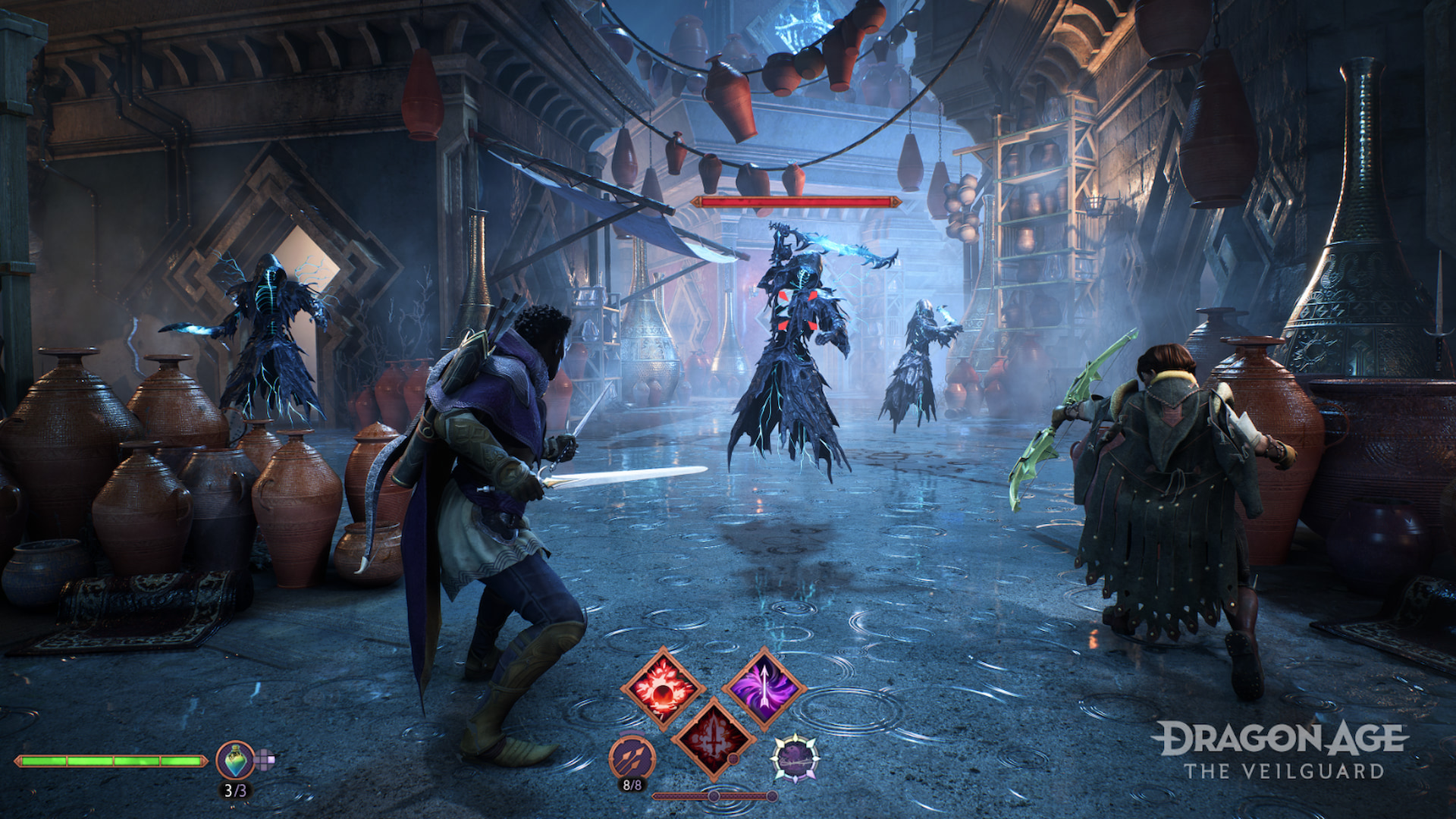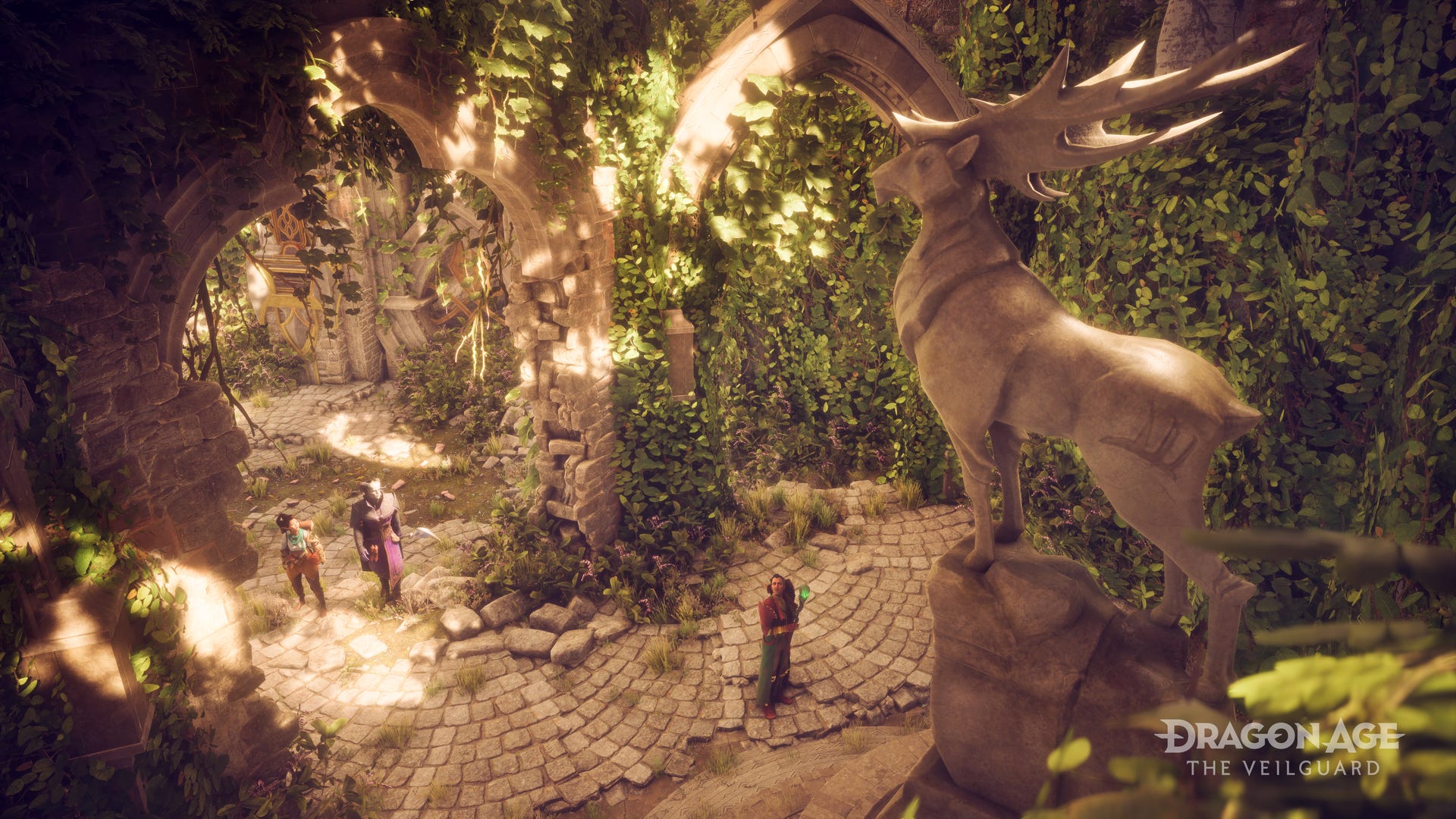
Judging a sequel to any video game can be challenging, especially with such a rich – and tumultuous – history as Dragon Age. It all began as a successor to BioWare’s Baldur’s Gate series, followed by an action RPG with a grossly limited development cycle, and then a sequel sporting open-world machinations (and its own development troubles). Then nothing for 10 years as the studio transformed and released some other abysmal titles while many of the original team left.
The next Dragon Age thus went from another live service title to a single-player title. From possessing any semblance of a tactical RPG combat system in Inquisition to a real-time hack-and-slash action title with RPG elements; and from shining a spotlight on the Dread Wolf to focusing on The Veilguard, the companions recruited throughout your journey. The results are enjoyable on the gameplay front, backed by stunning environmental art direction and some decent interactions, if you can accept or ignore the many nagging issues.
Dragon Age: The Veilguard follows Rook and Varrick, who have been hunting Solas for a year. En route to searching for detective and Shadow Dragon member Neve Gallus, they quickly learn that Solas is trying to tear down the Veil, leading to all sorts of horrors invading Minrathous. Though they work together to stop the ritual, two powerful Elven figures from Solas’s past – Elgar’nan and Ghilan’nain – escape their prison in the Fade. They now seek to unleash the full power of the Blight on the world, and whether Rook wants it or not, they must lead the effort to fight back.
“The results are enjoyable on the gameplay front, backed by stunning environmental art direction and some decent interactions, if you can accept or ignore the many nagging issues.”
It’s a pretty straightforward plot that follows the tried and true “Gather your allies” formula in a far more formulaic way than previous BioWare titles. The opening mission conveys the initial urgency of stopping Solas. Yet for all-powerful individuals who may as well be BioWare’s take on the Apocalypse Twins, my reaction on returning to Arlathan Forest, followed by meeting the Veil Jumpers and still seeing much of it in one piece was a resounding, “That’s it?” A calm before the storm, if you will.
Their presence is felt throughout, driving every other antagonistic force, from the obnoxious Venatori to the relentless Antaam and returning Darkspawn (who feel significantly less threatening than previous titles). Maybe it’s due to the pacing, which focuses so much on getting to key settings without substantially building them up. One example is traversing to an underwater prison to free Lucanis – from the breakneck way at which everything suddenly falls into place, all leading to a show of magic, a transition and then suddenly, you’re in the location. It reminds me of a similar sequence from Baldur’s Gate 3, which handled the transition (and overall mission) far better in every single way.
This also affects the characters in many ways – the first hour is full of reminders about the antagonists, their return to the world, and how bad things have become. By the time Bellara threw it out again, presumably in despair, I was ready to throw in the towel. The writing does improve as you go along, whether it’s the verbal jabs with Solas, the banter between Neve and Lucanis, or Rook’s introspections.
I also liked some quieter moments with Harding and Darvin, though the voice acting and facial animation can sometimes feel a bit off. While the latter is “bold and charming” (BioWare’s words, not mine), he often comes across as stoic and driven. Neve alternates between aloof and clever on a significant basis – maybe the idea was for her to appear mysterious and glib.
Even Emmerich, a gentleman and a necromancer who seemingly possessed some charisma, feels somewhat constrained. I don’t actively dislike my companions, but it doesn’t feel like I’m rushing to their rooms for conversation as much as ensuring I don’t miss out on time-limited exchanges. In some scenes, they look good and emote well, and my version of Rook feels like what I envisioned with the robust character creator, but in others, the expressions are just serviceable.
“While it would have been great to allow detonators to work with every primer – since it would have offered more freedom to the allies I could bring on missions – it’s not the worst limitation in the world.”
Then there’s the overall direction of the story, which feels so linear and rote (due in part to the linear mission-based structure), even as the game informs me of seemingly significant decisions that will have an impact later. It does toss some massive decisions with severe ramifications, both immediate and long-term, and yet, I struggled to care beyond arbitrarily choosing one. If all of that isn’t enough, the cameos of previous Dragon Age characters feel wasted and almost “blink-and-you-miss-it.” At least Varrick feels right, which only makes me wish he was more present.
One of the more positive aspects of Dragon Age: The Veilguard is combat. You have three classes, each with a significant skill tree and three Specializations. I went with the Warrior, eventually specializing into a Champion, and the choice in passives is pretty impressive. Deflecting projectile shots back at enemies sounded nice, but so did pulling them with a chain to smash them away or gaining flaming weapons on a parry. Certain options felt like quality-of-life enhancements (double-rolling into an enhanced melee), while others were more straightforward stat increases. Nevertheless, I still felt some joy in figuring out the best choices to optimize my current playstyle and how to achieve the right pathing.
The actual feel of combat is also solid and fairly addictive. Say what you will about everything else, but BioWare nailed the impact of drop-kicking fools in the face (or into the abyss). Shield throwing and ricocheting back and forth with subsequent heavy strikes also carries a satisfying oomph, while the default Ultimate is as over-the-top as hilarious. It did take some time to get used to the overall weightiness of strikes. While the effects in combat made it somewhat difficult to see the red, unblockable attacks, it wasn’t difficult to memorize enemy patterns and react accordingly.
As for the companions, it would have been nice if you could control them. Their skill trees and abilities are not as extensive as Rook’s, but there are enough upgrades and loot that it would have helped spice things up. As such, I relied on them for status effects, debuffs and the occasional detonation. And while it would have been great to allow detonators to work with every primer – since it would have offered more freedom to the allies I could bring on missions – it’s not the worst limitation in the world.

“Even though the overall scale of these maps is up for debate, they present some decent side content to run through between main story missions. They also provide an opportunity to admire the gorgeous environments. “
Does the tactical aspect hold a candle to the best in the world? No, but it complements the overall flow of the action. The AI felt a bit iffy especially when the whole lot seemingly focused on me with unrelenting aggression, but not downright unfair. Though I didn’t feel the need to, being able to fine-tune several aspects of the combat, from parry timing to enemy health, is nice.
Loot initially feels unexciting, but as you receive better rarities, even of the same items in your possession, and unlock more affixes, your options expand. That rare axe may not deal as much stagger damage as the Spellbound Longsword, but its ability to inflict bleed on every final attack in a combo, coupled with a ring which deals more bleed damage and damage to bleeding enemies, felt good.
Combining this with flaming weapons (or even cold damage via a Rune) for dual status procs and a Unique Ring that gives random buffs on takedowns felt even more fun, and that’s only scratching the surface. I would have liked a more intricate crafting system outside of “put one enchantment and only one” on an item or something more than just straight “+1”ing an item, but it all comes together well enough.
As for the exploration, I wasn’t very impressed with some missions – less so in their linearity and lack of diverging or improvising on the objective, and more on how they felt over too soon. However, you can revisit those regions later for side quests, either provided by your companions or discovered in the world.
There are puzzles, some which are thankfully a bit more challenging than those during the story (and which your companions won’t fall over themselves to tell you the solutions to); locations which aren’t accessible unless you recruit a specific companion; and even high-level Champions to defeat and unlock particular areas in the Crossroads (the realm between realms, as it were).
Discovering statues and their solutions to unlock additional skill points and permanent health boosts can be enjoyable, if not overtly difficult. And even though the overall scale of these maps is up for debate, they present some decent side content to run through between main story missions. They also provide an opportunity to admire the gorgeous environments.

“It’s nowhere near BioWare’s best, especially in the storytelling department, but after all its past failures and uncertainty, there are certainly far worse alternatives than “good enough.””
Between the NPCs roaming the streets of Docktown, including beggars, street musicians and vendors, or the wildlife, hostile and otherwise, in places like Rivain, the world of Thedas can feel quite vibrant. The level of interaction you get with said NPCs is woefully limited, but those passing exchanges are better than nothing. And as mixed as I am on the voice acting, at least the music is great, especially during combat.
I’m somewhat indifferent to the stylized looks of characters, but I do have issues with the overall image quality on consoles. Playing on PS5 and Performance Mode, there seemed to be this odd smudging on the visuals – almost like they didn’t feel as sharp as they should have. It seemed like my imagination until one scene showcased some hazy outlines around a character. Performance is otherwise solid throughout, with only one noteworthy frame drop.
Depending on expectations, Dragon Age: The Veilguard can provide an enjoyable action RPG experience. If you’re seeking a worthy successor to Dragon Age: Origins or even Inquisition in companions or plot, it doubtless falls short, feeling more comfortably bland than outright terrible. The combat may be worth the price of admission if you’re keen on real-time action without too much thought for your companions beyond choosing which targets to detonate.
Similarly, the visuals can be gorgeous, backed by incredible music, even as the facial animations, odd image quality, and voice acting can feel uneven. It’s nowhere near BioWare’s best, especially in the storytelling department, but after all its past failures and uncertainty, there are certainly far worse alternatives than “good enough.”
This game was reviewed on PS5.







